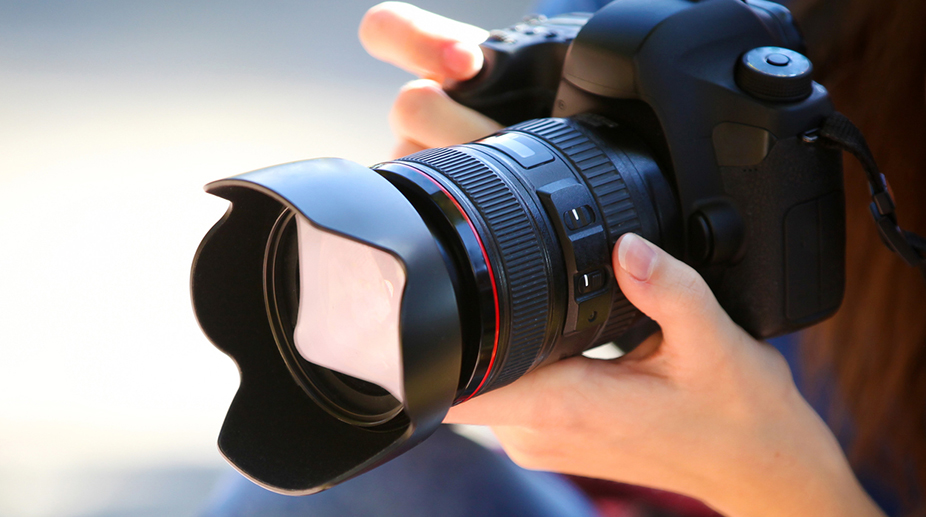Annpurna Devi to lead India at UNCSW session starting from Monday in New York
The Union minister for women and child development will deliver the National Statement at the Commission, and participate in the Ministerial Roundtable.

photo:getty
Photographers, amateur or professional, usually like to capture beauty — snow covered mountains, breathtaking flora and fauna, beautiful landscapes and the like, but her camera lens follows pictures of destruction and misery. Conflict photojournalist Heidi Levine who took breathtaking photographs of the Gaza war in 2014 has recently been in the news for one such photograph of hers being misused by Maliha Lodhi, Pakistan’s Permanent Representative at the UN.
“I have dealt with bloggers and newspapers using my photographs without my permission but this is the first time I have dealt with a situation like this one and I hope it will be the last one. I was very upset and shocked to hear that Maliha Lodhi misused my photograph claiming it was the photograph of a girl from Kashmir. For me, it truly compromises the dignity of Rawya (the girl in the picture) from Gaza,” Levine told IANS in an email interview of the gaffe.
Advertisement
Lodhi had displayed the photograph in the UN General Assembly on September 23 while responding to External Affairs Minister Sushma Swaraj’s scathing attack on Pakistan, saying it was evidence of “Indian brutality” in Kashmir.
Advertisement
Did she think there should be stricter norms for the use of photographs and other content by third parties?
“It seems as though people are disregarding the copyright of photographers and forgetting the fact that even downloading and copying our photographs is illegal without our permission or the companies many work for. Many photographers are taking legal action against those stealing their work. I am not sure how many people understand that it is illegal and for sure it would be helpful if this was better known and also if there are higher penalties,” Levine replied.
Speaking of capturing pictures of destruction and misery, the gutsy risk-taker said: “My first experience with covering misery and destruction was the refugee crisis in southern Lebanon in the aftermath of the Israel-Lebanon War of 1982. It was in the very beginning of my career as a professional photojournalist when I stared working for the AP in Israel.”
There’s been no looking back since then for Levine as she has documented most volatile war zones around the world.
Asked what drew her towards this passion, Levine said: “I always wanted to help people and before I became a professional photojournalist, I spent a lot of time trying to help those who were in need when I was growing up. I am not sure if I can pinpoint the exact reason that attracted me to document conflict because it feels as though it is something I feel I was born with. For me, photography has been a universal language that can connect all of us. It is a tool.”
Being in dangerous war zones away from family, children and home, for prolonged periods, bullets whizzing overhead, death always around the corner, how difficult is it to cover conflicts? How does her family perceive her work? Do they support and encourage her or, being apprehensive of her wellbeing, try to dissuade her?
“My family is very proud and supportive of my work but it has been very difficult on them as well. At times it has been very difficult to cover tragic events and then come back home and try to switch roles and take care of my children…I know that at times my children wished that I had a ‘normal job’, but today they are very proud of me. They do worry and I believe that because so many journalists have been killed and injured, my family worries more today than in the past,” Levine replied.
As for covering the Israel-Palestinian conflict, there wasn’t even time to unwind, she added.
“When I was in Libya, I decided to tell my youngest daughter that I was only on the border covering the refugee crisis. But in today’s social media connected world, it is much harder to lie, so I had to hide from her on Facebook. Later she told me that she knew I was inside Libya,” Levine said.
Working in war-torn areas, close to the action, positioned very near to explosions, firing and shelling, does she sometimes feel shattered seeing all this misery and feels like quitting?
“Of course I often get very upset. After all, I am a human and not a machine. But I have never felt like quitting because when I see misery, it makes me feel I need to work even harder to make people understand what is happening in the world,” Levine explained.
Has she noticed any change in the nature of conflict over the years?
“It is true that our world does seem to be in more of a state of conflict now. With modern technology, we are watching these tragedies unfold in real time. I wish I could answer why this is but I do not know the answer for this rise in conflict we are witnessing,” Levine replied.
Advertisement